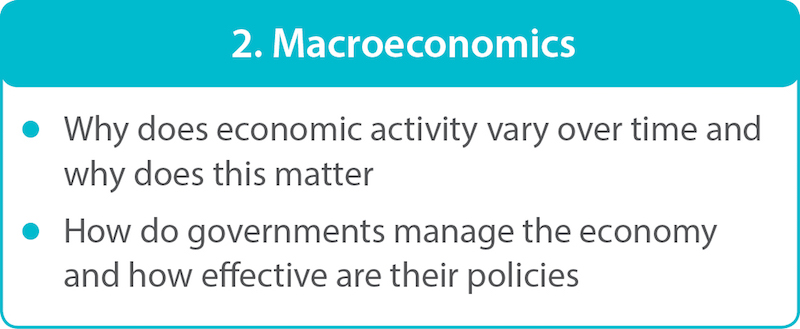Exploring the changes to the DP Economics syllabus
Posted on 3rd Feb 2020 in International Baccalaureate, Diploma Programme
By Jocelyn Blink and Ian Dorton, experienced IB teachers, workshop leaders and principal examiners
The economics course will be changing for first assessment in 2022. This guide will help you to understand the changes and introduce you to the latest Oxford resource that has been developed in cooperation with the IB to fully support you in delivering the new economics syllabus.
Why is the course structure changing?
The new economics course is similar to past programmes with its inclusion of a wide range of core economic theories. However, in line with movements across the world to make the discipline of economics more relevant to the ‘real world’, the new course helps students make more meaningful connections between economic theories and what is happening in the world around them.
Through the inclusion of an introductory unit which provides some origin of economic ideas in an historical context, the new course encourages students to appreciate that economic theories are based on the development of models which may differ, depending on the assumptions upon which they are based. This will support the development of critical thinking.
The new course is more firmly grounded in the pedagogical principles of the IB and reflects the value of using a concept-based and inquiry approach to teaching and learning.
What are the changes?
A conceptual approach
A fundamental change to the course is that it is founded on nine broad concepts that are seen as fundamental for a deeper understanding of the complex global economic environment. Each unit begins with statements of conceptual understandings that allow students to make meaningful connections between topics and helps them to apply the content to the real world. This conceptual focus will encourage students to approach the content in different ways, through multiple perspectives.

The role of inquiry
Students of economics have always been expected to find their own real-world examples to support their analysis. In the new course, this expectation has been enhanced by the emphasis on inquiry as a teaching and learning strategy. Students will develop their international-mindedness and higher order critical thinking skills by investigating their own real-world examples. The focus on student inquiry will ensure that students are more actively engaged in their own learning. The integration of examples into the analysis will be more formally assessed in the new course.
Content and structure
The Standard Level material is a subset of the Higher Level. HL content is an extension of SL content throughout the course, with some topics explored in greater depth, and some content treated exclusively at HL.
Given its relevance in contemporary economics, some elements of behavioural economics are now included in the course. There is a greater focus on key global issues related to the environment, inequality and poverty. These areas are explored in depth in the new resource.
Following an introductory unit, the course is divided into three main areas, each of which has two overarching real-world issues.



What will students gain from the new course?
Both SL and HL will help students to:

Assessment
The assessments at SL have not been greatly altered, although there has been some change of emphasis. In the SL paper 1, (the essay paper), the questions may be taken from all areas of the SL syllabus, and not just from microeconomics and macroeconomics. In addition, there is a stated emphasis upon the effective use of real-world examples in part (b) of the essay.
In the SL Paper 2, (the data response paper), the questions may be taken from all areas of the SL syllabus and not just international and development economics. Only one question, out of two, has to be answered, but the data is more detailed and there are more question parts than previously. There will be quantitative question in part (b) and calculators may be used.
In HL Papers 1 and 2, the changes are the same as for SL above, although the questions may be taken from all areas of the syllabus, including the HL extension topics.
HL Paper 3 is now a policy paper. There will be two questions and candidates are required to answer them both. As in the past, there will be quantitative questions, as well as a need for definitions and explanations. The final part of each question will ask candidates to recommend a policy to address the issue raised in the question.
In the Internal Assessment, for both SL and HL, the word limit for each of the three commentaries is now 800 words. In each of the three commentaries, students are to use one of the nine key concepts as a lens through which to analyse their extract. Each commentary must use a different key concept.


For more information, visit the Oxford IB website.
Evaluate Oxford’s new DP Economics Course Book online now.